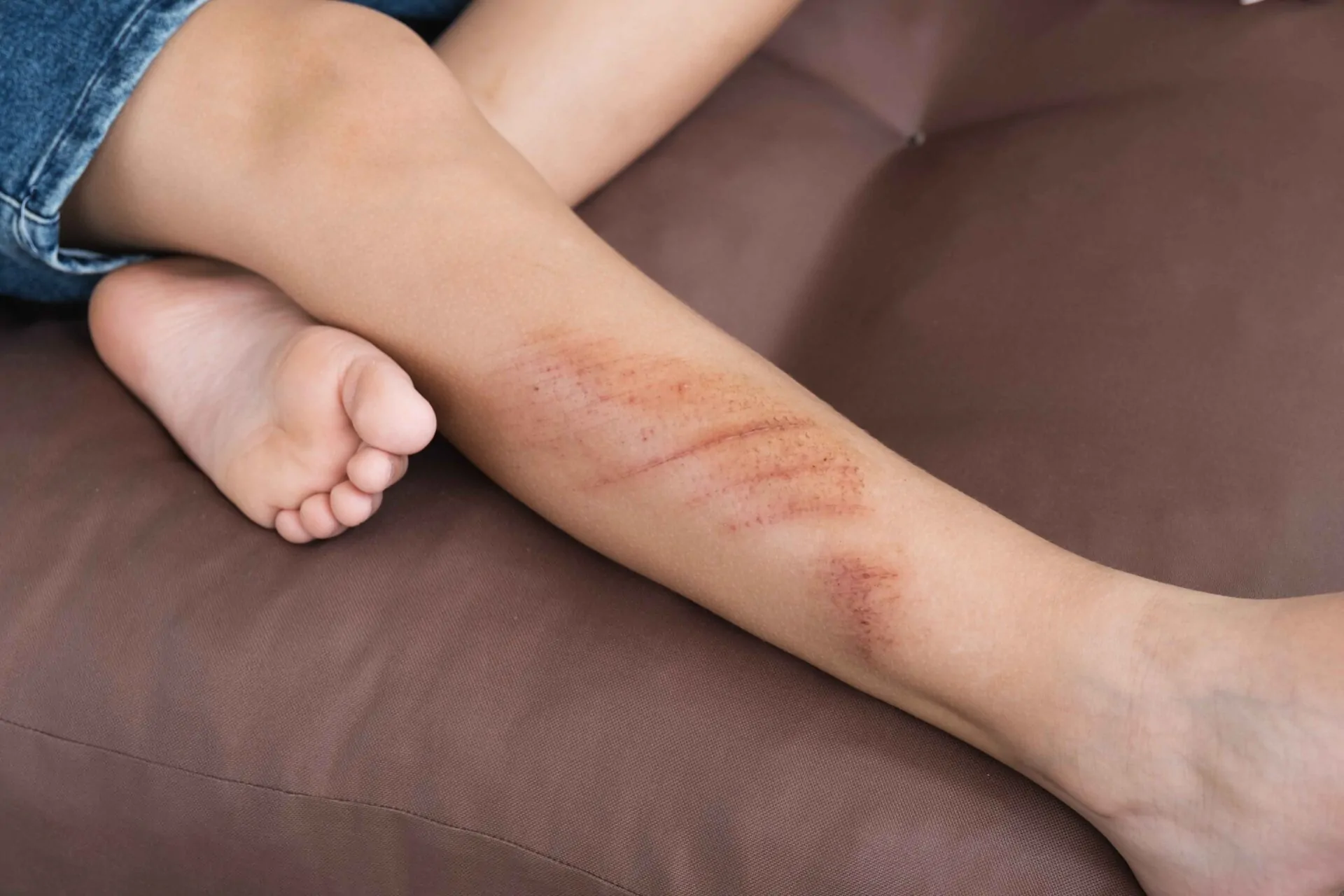Have you ever had a splinter that seemed harmless at first but later turned into a red, swollen infection? Or maybe you’ve had a scrape from a fall that suddenly started itching and oozing?
Minor injuries like these often get dismissed as no big deal. Most people would just rinse them off, slap on a bandage, and move on. However, even small wounds can become a breeding ground for bacteria.
Scratches and scrapes treatment isn’t just about cleaning a wound and stopping the bleeding. The goal should be to stop bacteria like Staphylococcus or Streptococcus from taking over. These pathogens can sneak into even the smallest breaks in your skin and cause anything from mild irritation to severe infections like cellulitis.
From using the right cleaning methods to identifying the signs of infection, the steps you take matter more than you think. Advanced Urgent Care is here to share science-backed tips and expert recommendations to help you stay one step ahead of infections and heal faster!
Importance of Proper Wound Care
Hidden Risks of Minor Injuries
It’s easy to think a small scrape or a shallow cut isn’t worth much attention. After all, it’s just a scratch, right?
But even the tiniest break in the skin can serve as an open invitation for harmful bacteria to step in. Bacteria like Staphylococcus aureus or Streptococcus don’t need much anyway, they just need a way in.
For example, when people accidentally cut themselves on a kitchen knife, many would just rinse it off and wrap it in a napkin. But by the next day, it’s swollen and tender, making every movement uncomfortable. Small injuries can turn into painful infections faster than you’d expect.
How Proper Care Prevents Complications
Knowing how to prevent infection of wound starts with understanding the basics:
- Clean it properly.
- Protect it with a sterile dressing.
- Monitor it over time.
If you’re diabetic or have a weakened immune system, these steps are even more critical. Slower healing and higher infection risks make consistent care a must-do to prevent small injuries from becoming serious health concerns.
What You Need to Know About Scratches, Scrapes, and Cuts
Types of Minor Skin Injuries
- Scratches: These are shallow marks, often caused by things like branches, pets, or rough surfaces.
- Scrapes: Commonly known as abrasions, scrapes cover a broader area, often from falling or sliding on rough ground.
- Cuts: These are the deep ones like kitchen knife accidents or broken glass. Cuts often break multiple layers of skin, leaving a pathway for bacteria to reach deeper tissues.
How Infections Happen
It’s surprisingly easy for bacteria to enter even the smallest wounds. A paper cut, for instance, can quickly get infected if left dirty or exposed. Common signs include redness, swelling, or heat around the wound. If untreated, infections can progress to pus formation, fever, or cellulitis.
Trusted Wound Cleaning Methods
Step-by-Step Guide to Cleaning Wounds
Following these wound cleaning methods from trusted medical providers can make all the difference in preventing infection and promoting healing.
- Start with clean hands. Wash your hands with soap and warm water for at least 20 seconds to keep bacteria away from the wound.
- Rinse the wound with running water. Forget dousing it in alcohol or peroxide, you’ll harm healthy skin cells even more. Clean, running water is enough to flush out dirt and debris. If anything is stuck, use sterilized tweezers to pluck it out.
- Dry it with a sterile gauze pad. Don’t use that kitchen towel sitting nearby, it could introduce more bacteria. Pat the wound dry instead of rubbing to avoid irritation.
- Apply an antiseptic. Choose a gentle one to protect the wound from bacteria while allowing the skin to heal naturally.
DON’Ts When Cleaning a Wound
- Don’t overuse hydrogen peroxide. It may seem like the go-to solution, but it can slow healing by damaging the tissues.
- Don’t leave debris behind. Even tiny particles can increase the chance of infection.
- Don’t use non-sterile items like towels. Always stick to sterile materials for drying and covering the wound.
Following these wound care tips for your next skin injury treatment can save you unnecessary pain and complications.
Advanced Wound Care Tips for a Smooth Recovery
Nutrition and Healing
Nutrients like zinc, Vitamin A, and collagen help repair damaged tissue and speed up recovery. You’ll find it in foods like pumpkin seeds, chickpeas, and whole grains. Vitamin A supports skin regeneration and is plentiful in sweet potatoes, spinach, and even eggs.
Scar Prevention
The way you treat your wound early on shapes how it heals. Using silicone sheets or ointments like Mederma keeps the area hydrated and flexible. UV rays can also make scars darker and more visible. Cover your healing skin or use sunscreen to keep it protected.
Long-Term Care for Serious Wounds
Some wounds, especially those affected by diabetes or circulation issues, heal slower than expected. In these cases, professional treatments like debridement or care at a wound clinic can provide the extra support your body needs to heal fully.
No Wound Is Too Small for the Right Care
Even the smallest wound deserves the right attention.
Proper care for even minor injuries, like scratches and scrapes treatment, goes beyond cleaning and covering. Keeping a wound clean, using the right dressings, and monitoring for redness or swelling can prevent complications and infection.
But sometimes, home care isn’t enough. If a wound doesn’t heal, starts to show signs of infection, or feels increasingly painful, it’s time to seek professional help. At Advanced Urgent Care, you’ll find expert care for wounds of all kinds. Visit us at 797 S Arroyo Pkwy, Pasadena, CA 91105, or call 626-304-0404 for trusted advice and treatment.

